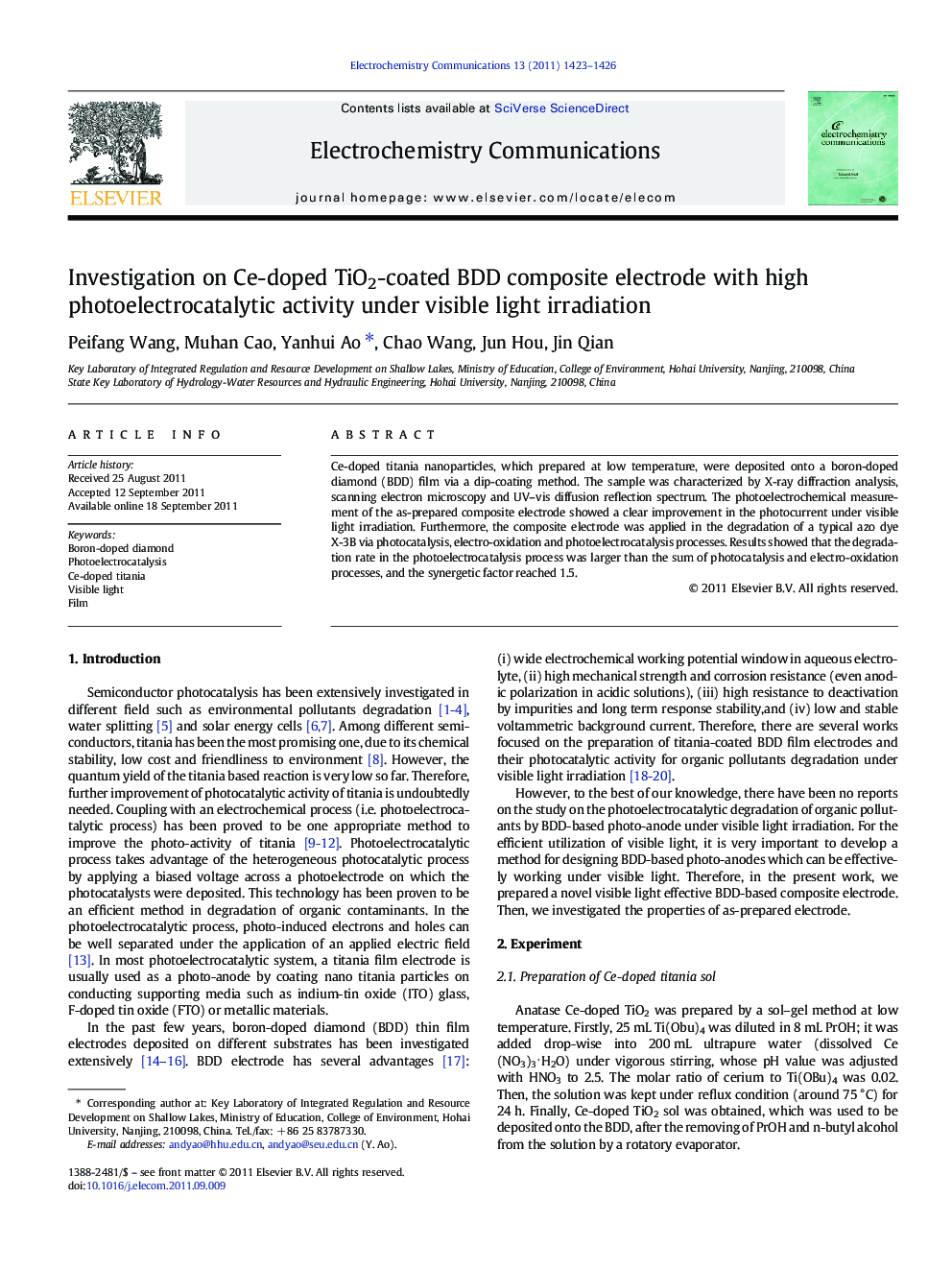| Article ID | Journal | Published Year | Pages | File Type |
|---|---|---|---|---|
| 180243 | Electrochemistry Communications | 2011 | 4 Pages |
Ce-doped titania nanoparticles, which prepared at low temperature, were deposited onto a boron-doped diamond (BDD) film via a dip-coating method. The sample was characterized by X-ray diffraction analysis, scanning electron microscopy and UV–vis diffusion reflection spectrum. The photoelectrochemical measurement of the as-prepared composite electrode showed a clear improvement in the photocurrent under visible light irradiation. Furthermore, the composite electrode was applied in the degradation of a typical azo dye X-3B via photocatalysis, electro-oxidation and photoelectrocatalysis processes. Results showed that the degradation rate in the photoelectrocatalysis process was larger than the sum of photocatalysis and electro-oxidation processes, and the synergetic factor reached 1.5.
► Ce-doped TiO2-coated BDD composite electrode was designed for the first time. ► The composite electrode shows high activity for dye degradation. ► The composite electrode can be excited by visible light. ► The recombination rate of photo-induced charge pairs can be decreased. ► It exhibits a synergetic factor of 1.5 for dye degradation.
